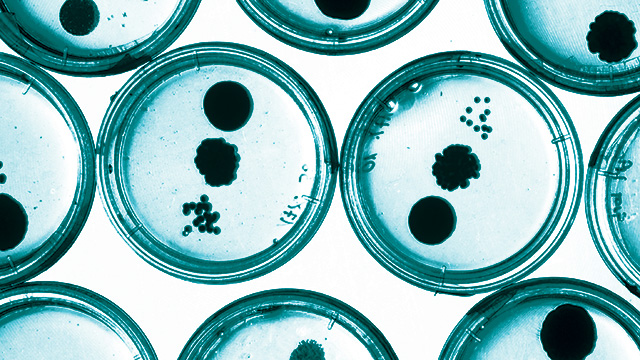Cutting Contamination in Your CO2 Incubator
Keeping cultures free of contamination depends on technique and the right tools

Any scientist who has spent even a bit of time working with cell cultures has probably contaminated some—more likely lots—of them. Keeping cultures free of contamination depends on technique and the right tools. In the best case, those tools keep scientists out of trouble as much as possible, and the right carbon dioxide (CO2) incubator can do just that.
If contamination arises, the first thing to figure out is the source. “Contamination in CO2 incubators nearly always comes from outside the incubator,” says Mary Kay Bates, senior global cell culture specialist at Thermo Fisher Scientific (Waltham, MA). “Most commonly, the sources of incubator contaminants are humans working in the lab, and environmental contaminants that come in with humans.” Some of that can’t be avoided, because we are basically microbe machines, shedding them from our hair, skin, and even breath. No amount of technique, even the most artsy of all, can keep all those microbes out of an incubator.
“The simple fact is that when any incubator door is opened, the air inside mixes with the surrounding room air and that’s often how contaminants get inside,” Bates explains.
Timely turnover
To keep as many microbes as possible out of a CO2 incubator, air coming into it must go through a HEPA filter. But that’s not enough. “Thermo Scientific CO2 incubators filter the entire chamber air volume every 60 seconds to establish ISO Class 5 cleanroom conditions in five minutes after a 30-second door opening,” Bates notes.
To keep everything in an incubator clean, it takes an engineered design. Buckner Richerson, vice president of international sales at NuAire (Plymouth, MN), asks, “A forgiving incubator design assumes that contamination is coming, so what happens after that?” In a well-designed CO2 incubator, filters keep particles and microbes from entering the chamber. Most incubators include in-line filters for incoming air, CO2, oxygen in an oxygen-sensored incubator, the main capsule, and one for the electronics.
Seeking sources
Despite the sophisticated technology in today’s CO2 incubators, don’t expect them to do everything. Help an incubator out!
“Be careful about technique and where you do prep,” says Richerson. If that technique contaminates a Petri dish or multiwell plate, the microorganisms will then grow inside the incubator.
Part of that technique involves incubator placement. Keep a CO2 incubator away from windows that are opened. Even keep it away from doors, or as far from them as possible. It’s even more difficult to keep an incubator away from air vents, but worth doing, because that air carries contaminants. “A common source of fungi, for example, is when a building air duct in the lab ceiling is blowing cooled air onto the incubator,” Bates explains.
That’s just the start. Stacks of cardboard boxes can get damp and breed mold. Other equipment in a lab can also start a chain reaction of contamination. “Users should clean other cell-culture equipment, such as centrifuge chambers and rotors, microscope stages, and water baths,” Bates encourages.
In general, clean everything. Some scientists use the top of an incubator as a shelf for storing gloves or other items, but that area can then harbor microbe-carrying dust, poised to sprinkle into an open incubator door.
In addition to the air, dust, and samples that go into a CO2 incubator, water can also cause contamination. “If nonsterile water is added to the humidity pan, this is a clear risk for introducing microorganisms, because even distilled water is not sterile,” Bates points out.
Tidy tips
To keep a CO2 incubator clean, follow tips from the experts. It starts with technique. Always follow aseptic techniques, such as wearing gloves when touching an incubator.
Keep it clean. “Clean and disinfect the incubator regularly, at least once each month,” Bates suggests. “Discard old, unused cultures, clean up any spills, and wipe with 70 percent ethanol and allow to air dry.” The ease of cleaning an incubator depends largely on its design. A one-piece interior with coved corners is easier to clean. “You want a surface with no crevices or cracks,” Richerson says.
At PhoenixSongs Biologicals (Branford, CT), executive vice president Marsha Roach works with stem cells, which require precise conditions. “We have an annual process of calibration and certification of our incubators and hoods,” she says. “Our incubators are cleaned every six months with Wescodyne®, followed by an ethanol wipe using autoclaved wipes.” Scientists at this company use autoclaved, deionized water in the water reservoir and water pan.
Related Video: Selecting the Best CO2 Incubator for Your Lab
Roach and her colleagues also use careful techniques. “Plates of cells are never moved between incubators,” she explains. “Only gloved hands washed with ethanol are allowed to enter an incubator to remove a plate or flask.” Before daily use, they use Wescodyne followed by an ethanol wipe on their microscope stage, and the trays in their biological safety cabinets or laminar flow hoods. “This helps to ensure our plates or flasks are never put on a contaminated surface and then returned to the incubator,” she says.
Most incubators will end up contaminated at some point. When that happens, Bates says, “run a high-temperature sterilization cycle that adheres to the U.S. Pharmacopeia standards for sterilization.” Some scientists also opt for a copper interior, because it is germicidal.
No matter how much the technology has improved, it’s still possible to make a mess of even the best CO2 incubator and all the culture inside. With modern design and some careful use, however, scientists don’t have to fight as much contamination as they once did.
For additional resources on CO2 incubators, including useful articles and a list of manufacturers, visit www.labmanager.com/incubators
